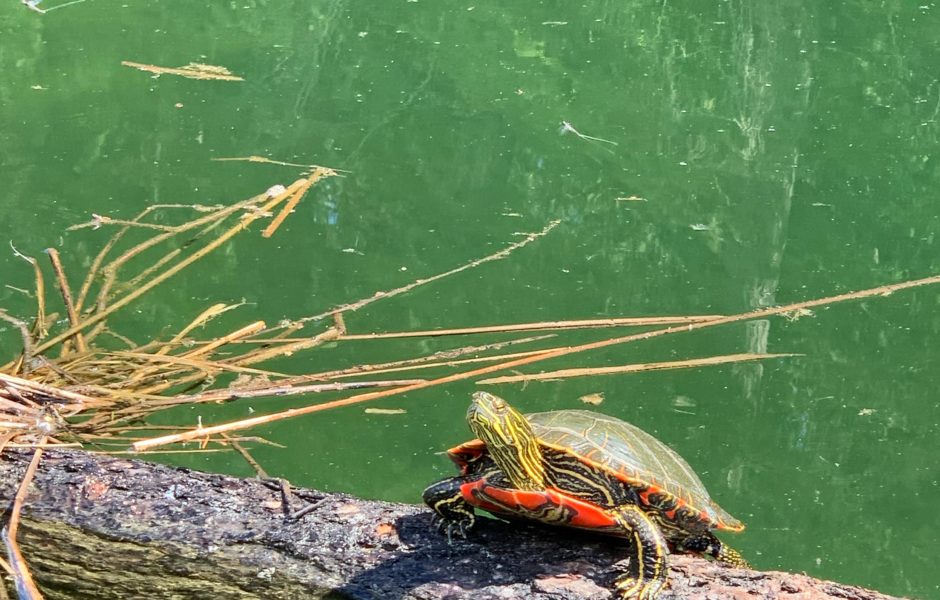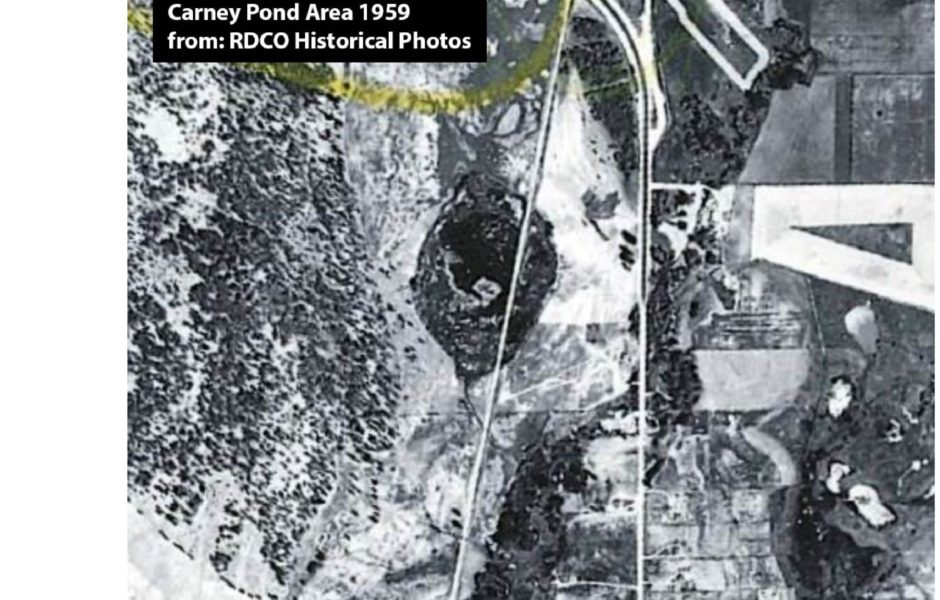
Western Painted Turtle
Carney Pond offers almost everything a western painted turtle could want. In the warmer months, you will witness them basking on floating logs and foraging for food in the cattails. Here, they are protected from disruptive and dangerous encounters with humans, dogs, raccoons, and skunks by the dense vegetation surrounding the pond. In the winter, they hibernate in the muddy pond-bottom where they stop breathing and can miraculously survive a season under 50cm of ice.
For turtles, basking is as important as eating. Without sunning themselves for hours at a time, they would not be able to regulate their body temperature, digest their food, keep themselves clean of parasites or get in the mood for love.
Western painted turtles are well-known for the striking red patterns on the undersides of their shells. In fact, it is these bright markings that inspired people to call these turtles “painted”. Each turtle’s markings are unique, which is useful to researchers who need to identify individuals in their field studies.
The invasive red-eared slider threatens the health of western painted turtle populations in the Okanagan. Red-eared sliders are turtles commonly kept by people as house pets. This species became invasive in the Okanagan when people started releasing their pet turtles into local wetlands. Western painted turtles and red-eared sliders are similar in size and shape, although red-eared sliders can be easily identified by the red streaks on either side of their heads.
Hundreds to thousands of western painted turtles in the Central Okanagan are killed crossing roads each year when they leave their wetlands in search of nesting sites, mates, and new wetlands to colonize. Our road network is a treacherous obstacle course for turtles, fragmenting and eliminating the wetlands they call home.
The western painted turtle is the last surviving native pond turtle species in BC. The Committee on the Status of Endangered Wildlife in Canada (COSEWIC) has classified the status of this species in the Okanagan to be of “Special Concern”. Existing populations continue to feel the impact of human activities that either destroy or degrade the environments they require for life. We must commit to preserving places like Carney Pond, and finding ways for them to cross roads safely.

Vanishing Wetlands
Wetlands provide rare and valuable habitat in the arid Okanagan. Over 80% of our wildlife is either directly dependant on wetlands and riparian ecosystems or use them more frequently than other habitats. We depend on wetlands to support biodiversity, purify water, offer flood protection, manage storm water, recharge ground water and control erosion. Recognizing the importance of wetlands is long overdue; until recently, wetlands were frequently filled for land development or because they were considered hazards to human health. To date, we have lost nearly 85% of the low elevation wetlands and riparian ecosystems in the Okanagan. This loss continues at a rate of 1.4% a year. Threats to wetlands include development pressure, agriculture, habitat alteration, invasive species, changes in hydraulic regimes, climate change, fragmentation, and contamination.
Like most urban wetlands, Carney Pond is separated from neighbouring habitat by human development. Academy Way fragments Carney Pond from adjoining upland habitat between Roberts Lake to the north and Alki Lake at the landfill. The natural movement corridors required by species like the western painted turtle to reach nearby wetlands are blocked, and this isolation compromises the local turtle population’s genetic diversity. Carney Pond is an island of sensitive habitat and rare ecological communities that continues to offer essential habitat for a diversity of wildlife to forage, nest, drink and breed. It also provides important wetland services such as storing water and maintaining water quality by filtering sediment and toxins before it flows into Mill Creek.
